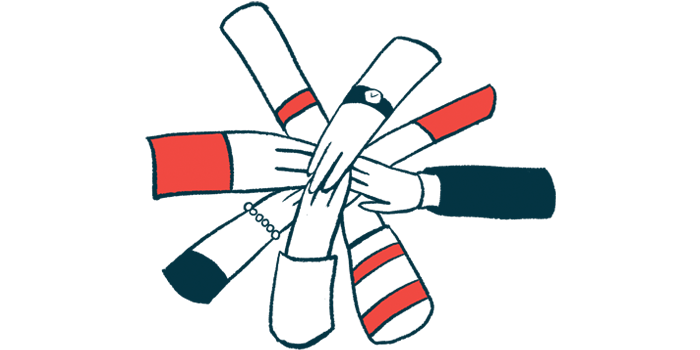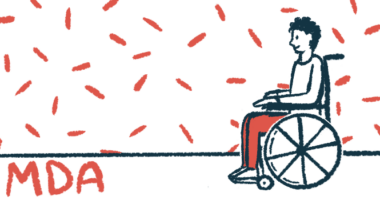LGMD scientific workshop gathers experts to tackle unmet needs
Over 20 speakers talked novel therapies for muscle-wasting diseases

Patients and experts in limb-girdle muscular dystrophy (LGMD), along with drug developers, community leaders, and regulatory agency personnel, came together for the LGMD Scientific Workshop to discuss how to tackle the unmeet therapeutic needs of people with these muscle-wasting diseases.
The workshop, held in early February in Maryland, was hosted by The Speak Foundation, a patient-led organization for LGMD.
“The LGMD Scientific Workshop marked an important milestone in advancing therapeutic development for the LGMDs,” Jerry R. Mendell, a neurologist from Nationwide Children’s Hospital, in Ohio, now retired, and the event’s keynote speaker, said in a foundation press release.
“It was encouraging to see the community galvanize as a whole around the significant progress in science and the clinical understanding of the LGMDs that now presents near-term opportunities to address the significant and pressing unmet need experienced by patients living with LGMD,” said Mendell, who also serves as a senior advisor for Sarepta Therapeutics.
LGMD is a group of rare disorders that specifically cause muscle wasting at the hips and shoulders. With more than 30 forms of LGMD, the distinct subtypes are characterized by differences in the age of onset, inheritance patterns, and disease progression.
Scientific workshop focused on 6 LGMD subtypes
The workshop featured more than 20 speakers, as well as a five-member patient panel. The focus was on six particular disease subtypes: 2A/R1, 2B/R2, 2C/R5, 2D/R3, 2E/R4, and 2I/R9.
Among the experts were research scientists, clinicians, drug developers, senior leaders from the U.S. Food and Drug Administration (FDA) Center for Drug Evaluation and Research (CDER) and Center for Biologics Evaluation and Research (CBER), and other specialists. Together with patients and community leaders, those assembled brainstormed during the daylong event on how to accelerate the development of novel therapies for LGMD.
Participants discussed clinical trial design for therapies targeting the causes of the distinct subtypes, as well as the need for tailored outcome measures for each subtype. Attendees recognized the challenges of living with LGMD and the urgent need for disease-modifying treatments.
Regulatory flexibility could help achieve this goal by bringing patient-focused drug development forward, the participants agreed.
“The LGMD Scientific Workshop demonstrates that we are at a juncture with a clearly understood pathway forward to develop proposed treatments in many subtypes of LGMD. The abundance of scientific research also supports the opportunity to leverage accelerated approval based on surrogate endpoints [outcome measures in trials],” said Kathryn Bryant Knudson, The Speak Foundation’s founder.
FDA directors took part in discussions on new treatments
Peter Marks, MD, PhD, the director of the FDA’s CDER, and Peter Stein, MD, the director of CDER’s Office of New Drugs, took part in a discussion moderated by Annie Kennedy of the EveryLife Foundation for Rare Diseases.
The workshop also featured sessions with Nicole Verdun, MD, an office director in CBER, and Michelle Campbell, PhD, FDA’s associate director for Stakeholder Engagement and Clinical Outcomes in the Office of Neuroscience, Office of New Drugs.
The workshop also included talks by neuromuscular disease specialist Nicholas Johnson, MD, from Virginia Commonwealth University, and neurologists Katherine Mathews of the University of Iowa and Matthew Wicklund at the University of Texas San Antonio. Other talks featured Peter Kang, MD, a pediatric neuromuscular neurologist at the University of Minnesota Medical School, and Lindsay Alfano, a physical therapist focused on neuromuscular disorders at Nationwide Children’s.
We are thrilled that the workshop advanced a collaborative dialogue and brought people together from every facet of the drug development process to drive progress for patients. This was truly a monumental event for the LGMD community and a model for others to follow in the future.
Jennifer R. Levy, PhD, scientific director of the Coalition to Cure Calpain 3, addressed patient-focused drug development in LGMD. Louise Rodino-Klapac, PhD, executive vice president and chief scientific officer at Sarepta, and Douglas Sproule, MD, chief medical officer at ML Bio Solutions, a BridgeBio affiliate, also joined. Both took part in a roundtable discussion about LGMD endpoints and clinical trial design.
“Throughout the day, repeated calls were made for early, frequent, and continued conversation and collaboration between FDA, patients, and industry to efficiently address the full range of challenges and opportunities to bring the first therapies to LGMD patients as rapidly as possible while creating a viable blueprint for more therapies to follow,” a workshop summary stated.
Knudson pronounced the workshop a success.
“We are thrilled that the workshop advanced a collaborative dialogue and brought people together from every facet of the drug development process to drive progress for patients. This was truly a monumental event for the LGMD community and a model for others to follow in the future,” Knudson said.








